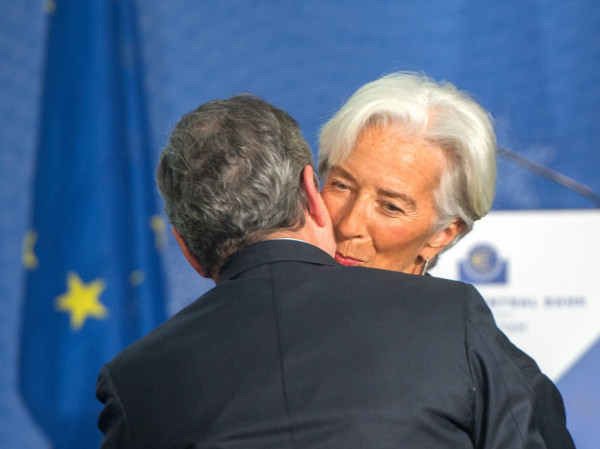Look away: The ECB is about to change its rules of engagement
ECB policymakers will meet on Wednesday outside of the framework of their usual monetary policy meetings to decide the technical details about how the central bank should operate in the post-QE era.
All the signalling from the ECB suggests they don’t want markets to read too much into the so-called Operational Review's conclusions. But the mechanics they decide on could have a bearing on the market's vulnerability to unexpected wholesale interest rate spikes and other market dysfunctions. That means markets will be watching carefully, regardless of what central bankers want.
The ECB hasn’t so far given much away on what the new rules will look like.
What we do know is that it is aiming to find a way to limit costly balance sheet support to the financial system, without inadvertently limiting its ability to respond effectively when markets behave erratically.
One thing all policymakers do seem agreed on is that a new model for supplying — and pricing — liquidity is needed in light of the fact that the enduring trauma of the global financial crisis of 2008 means markets now demand a permanently higher level of overall liquidity.
Recent speeches by senior officials have indicated that, even in the future, much of that liquidity will be provided on a quasi-permanent basis by bond purchases. The remainder will be provided through regular lending operations, as was the case until 2008 — with one key difference: officials have told POLITICO that there will be no rationing of liquidity at the lending operations.
But there has been little clarity on the finer points, not least how big the so-called ‘structural bond portfolio’ will end up being or what bonds will and won’t be included in it.
Nor has there been any clear guidance on the overall split between bond purchases and lending operations.
That ambiguity is likely linked to the ECB — like the U.S. Federal Reserve and Bank of England, which are on a similar path — not being fully confident about how much liquidity it can withdraw without triggering financial market upheaval.
Such details matter. The eurozone is not an ideal monetary union, and money tends to cluster in a few centers, such as Paris and Frankfurt, especially when it’s pushed out through bond purchases.
Some ECB officials, such ex-President Mario Draghi’s right-hand man Massimo Rostagno, see bond purchases as the better guarantee of liquidity, and of smooth credit provision to the economy, in the more vulnerable financial systems on the region’s periphery.
This is not the rate cut you're looking for
But there has also been little clarity over how, if at all, the ECB will revamp its standing facilities. At present, in the framework of ‘abundant’ reserves, the only rate that really matters is the deposit facility rate, currently at 4 percent. But it also has two lending facilities, one for what used to be its Main Refinancing Operations (MRO), and one for a Marginal Lending Facility (MLF), an emergency facility that used to keep a lid on overnight rates before 2008.

Reuters reported last month that the ECB intends to narrow the spread between the deposit rate and the MRO rate, the idea being that this would contain any volatility in short-term money markets as it changes its operating model.
However, that presents a communication challenge for the ECB: it doesn’t want to raise the deposit rate any further, but cutting the MRO rate risks sending the wrong signal to financial markets that get over-excited about the prospect of easier money.
As such, the ECB has been at pains to announce the results of its review separately from its usual monetary policy announcements. Wednesday’s meeting of the Governing Council (a virtual one that wasn’t even on the ECB’s website calendar until last Thursday) is explicitly highlighted as a non-policy-making meeting.
Other operational questions remain too. Some policymakers want the ECB to raise its minimum reserve requirement, which would spare national central banks some losses at the cost of commercial banks. Others want to embed preferential lending terms for green investment. And a larger chunk would like to remove the perceived ‘stigma’ from using the ECB’s lending facilities altogether, although none has explained how this squares with the central bank's historic role as ‘Lender of Last Resort’.
One idea, which has not been aired much but is established in the U.S. and coming in the U.K., is that the ECB should widen the circle of institutions to which it lends, reflecting the growing importance of so-called ‘non-banks’ to overall financial stability.
Given all this, the ECB seems unlikely to present the answers to all the open questions on Wednesday. Moreover, as BNP Paribas analysts said in a recent note, any change it does announce may come with a lengthy implementation period.